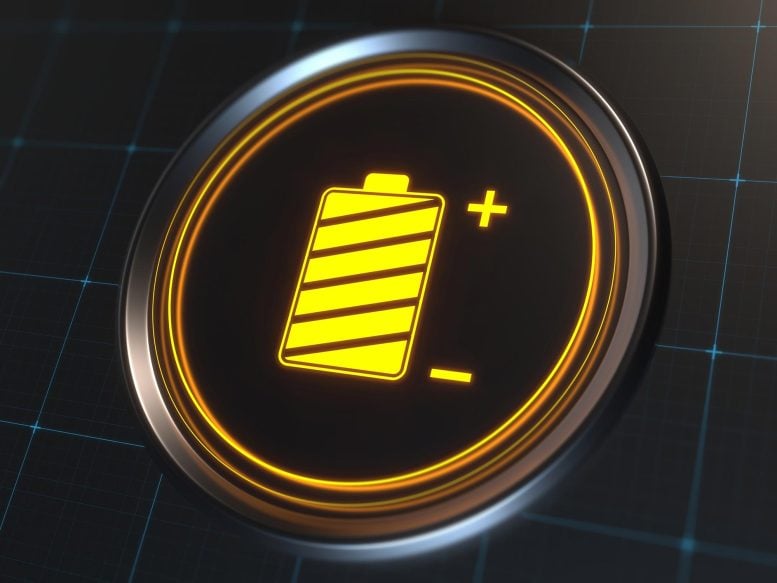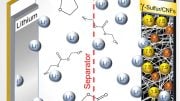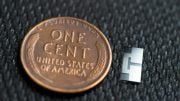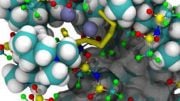
Sodium-sulfur batteries, also known as Na-S batteries, are a type of energy storage system that uses a molten mixture of sodium and sulfur as the electrolyte.
A new battery has been developed that boasts four times the capacity of lithium batteries, and at a more affordable cost.
An international team of researchers, led by Dr. Shenlong Zhao from the University of Sydney, has developed a new battery that has the potential to significantly reduce the cost of transitioning to a decarbonized economy.
The battery has four times the energy capacity of lithium-ion batteries and is much cheaper to produce. The team used sodium-sulfur, a type of molten salt that can be extracted from seawater, to create the battery, making it a more cost-effective alternative to lithium-ion batteries.
Although sodium-sulfur (Na-S) batteries have existed for more than half a century, they have been an inferior alternative and their widespread use has been limited by low energy capacity and short life cycles.
Using a simple pyrolysis process and carbon-based electrodes to improve the reactivity of sulfur and the reversibility of reactions between sulfur and sodium, the researchers’ battery has shaken off its formerly sluggish reputation, exhibiting super-high capacity and ultra-long life at room temperature.
The researchers say the Na-S battery is also a more energy-dense and less toxic alternative to lithium-ion batteries, which, while used extensively in electronic devices and for energy storage, are expensive to manufacture and recycle.
Dr. Zhao’s Na-S battery has been specifically designed to provide a high-performing solution for large renewable energy storage systems, such as electrical grids, while significantly reducing operational costs.
According to the Clean Energy Council, in 2021 32.5 percent of Australia’s electricity came from clean energy sources and the industry is accelerating. Household energy storage is also growing. According to a recent report a record 33,000 batteries were installed in 2021.
“Our sodium battery has the potential to dramatically reduce costs while providing four times as much storage capacity. This is a significant breakthrough for renewable energy development which, although it reduces costs in the long term, has had several financial barriers to entry,” said lead researcher Dr. Zhao.
“When the sun isn’t shining and the breeze isn’t blowing, we need high-quality storage solutions that don’t cost the Earth and are easily accessible on a local or regional level.
“We hope that by providing a technology that reduces costs we can sooner reach a clean energy horizon. It probably goes without saying but the faster we can decarbonize — the better chances we have of capping warming.
“Storage solutions that are manufactured using plentiful resources like sodium – which can be processed from seawater – also have the potential to guarantee greater energy security more broadly and allow more countries to join the shift towards decarbonization.”
The lab-scale batteries (cion batteries) have been successfully fabricated and tested in the University of Sydney’s chemical engineering facility. The researchers now plan to improve and commercialize the recently fabricated Ah-level pouch cells.
Reference: “Atomically Dispersed Dual-Site Cathode with a Record High Sulfur Mass Loading for High-Performance Room-Temperature Sodium–Sulfur Batteries” by Bin-Wei Zhang, Liuyue Cao, Cheng Tang, Chunhui Tan, Ningyan Cheng, Wei-Hong Lai, Yun-Xiao Wang, Zhen-Xiang Cheng, Juncai Dong, Yuan Kong, Shi-Xue Dou and Shenlong Zhao, 29 October 2022, Advanced Materials.
DOI: 10.1002/adma.202206828









They don’t clarify, is this more capacity by weight or by volume? Anything can have a high capacity by increasing volume. When you say energy capacity increases, you need to clarify is it’s higher power capacity with the same size? Or same capacity but lighter? Or both? Don’t just say more capacity… That means very little.
Most batteries suffer a loss of capacity over time. For a green battery it must have a long life to break the current 1,000 cycle constraint.
“and a low-capacity fading rate of 0.05% per cycle over 1000 cycles”
“Remarkably, the S@MoS2-Mo1/SGF delivers an initial capacity of 1017 mAh g−1 and retains a high capacity of 505 mAh g−1 after 1000 cycles at 0.1 A g−1. ”
From the linked paper. So after 1000 cycles 50% of capacity is gone.